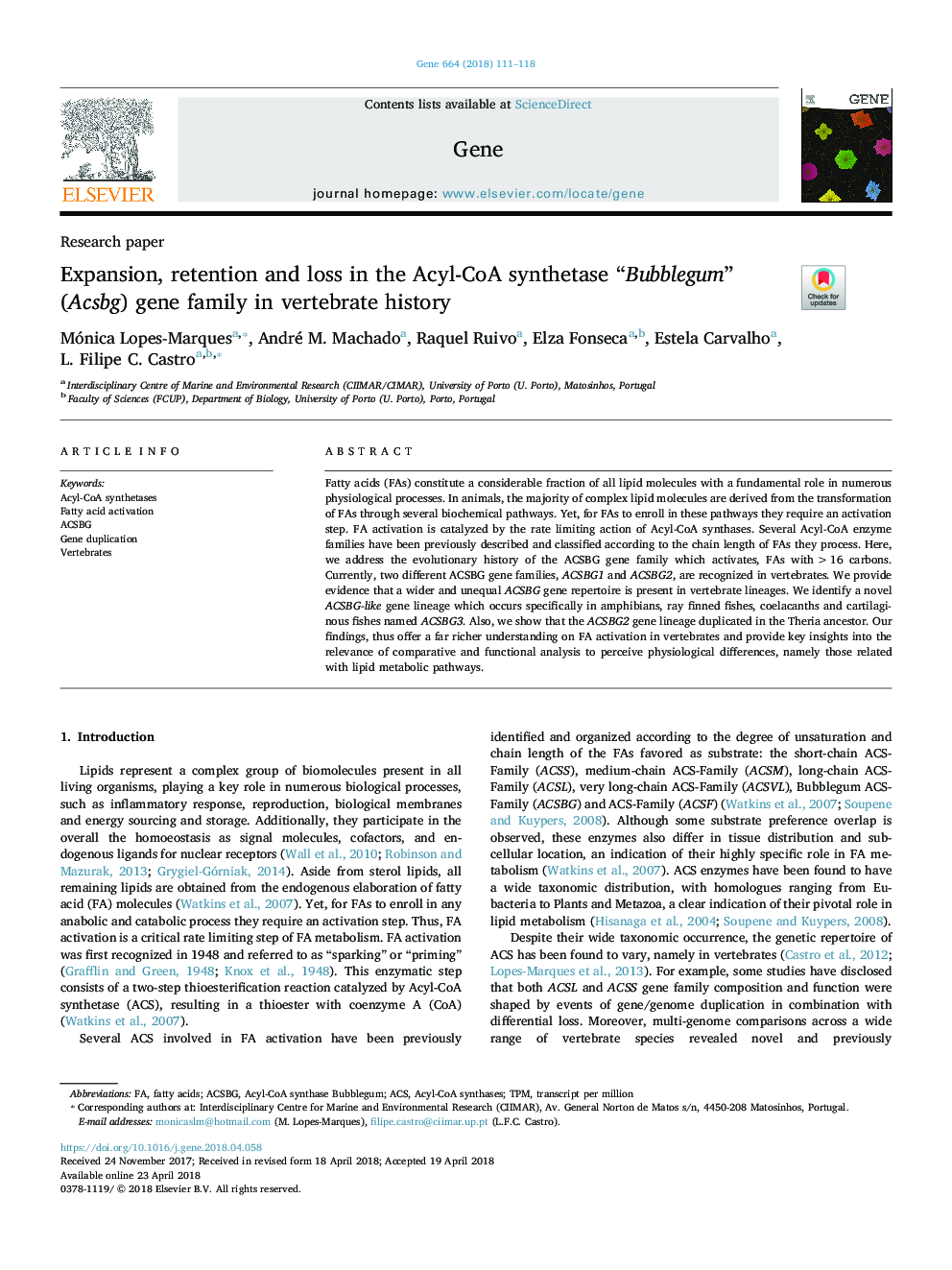| Article ID | Journal | Published Year | Pages | File Type |
|---|---|---|---|---|
| 8644968 | Gene | 2018 | 8 Pages |
Abstract
Fatty acids (FAs) constitute a considerable fraction of all lipid molecules with a fundamental role in numerous physiological processes. In animals, the majority of complex lipid molecules are derived from the transformation of FAs through several biochemical pathways. Yet, for FAs to enroll in these pathways they require an activation step. FA activation is catalyzed by the rate limiting action of Acyl-CoA synthases. Several Acyl-CoA enzyme families have been previously described and classified according to the chain length of FAs they process. Here, we address the evolutionary history of the ACSBG gene family which activates, FAs with >16 carbons. Currently, two different ACSBG gene families, ACSBG1 and ACSBG2, are recognized in vertebrates. We provide evidence that a wider and unequal ACSBG gene repertoire is present in vertebrate lineages. We identify a novel ACSBG-like gene lineage which occurs specifically in amphibians, ray finned fishes, coelacanths and cartilaginous fishes named ACSBG3. Also, we show that the ACSBG2 gene lineage duplicated in the Theria ancestor. Our findings, thus offer a far richer understanding on FA activation in vertebrates and provide key insights into the relevance of comparative and functional analysis to perceive physiological differences, namely those related with lipid metabolic pathways.
Keywords
Related Topics
Life Sciences
Biochemistry, Genetics and Molecular Biology
Genetics
Authors
Mónica Lopes-Marques, André M. Machado, Raquel Ruivo, Elza Fonseca, Estela Carvalho, L. Filipe C. Castro,
